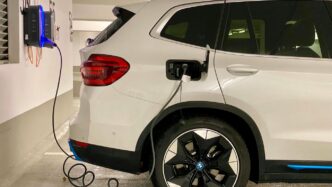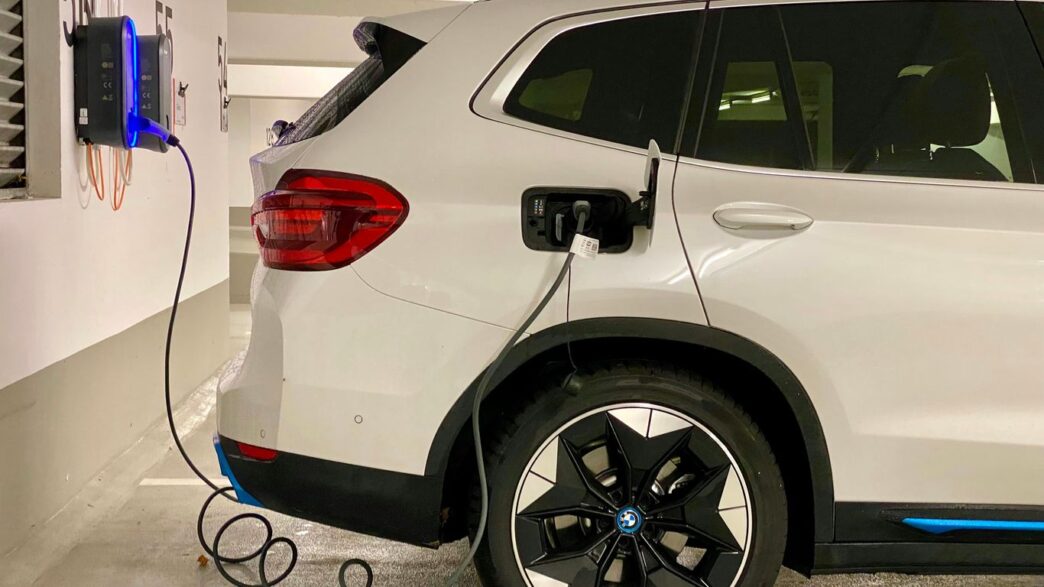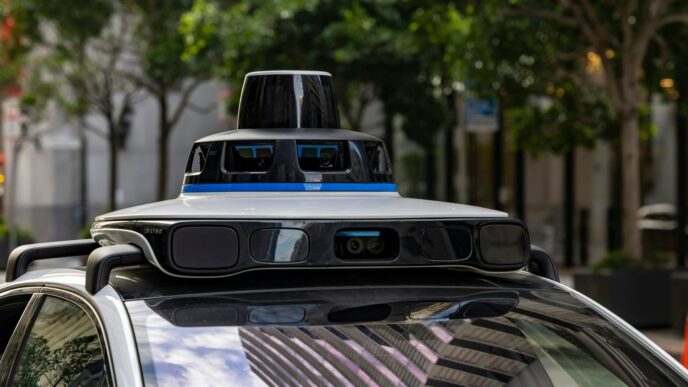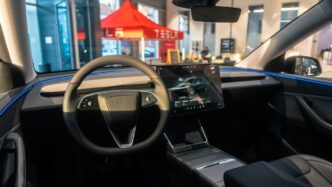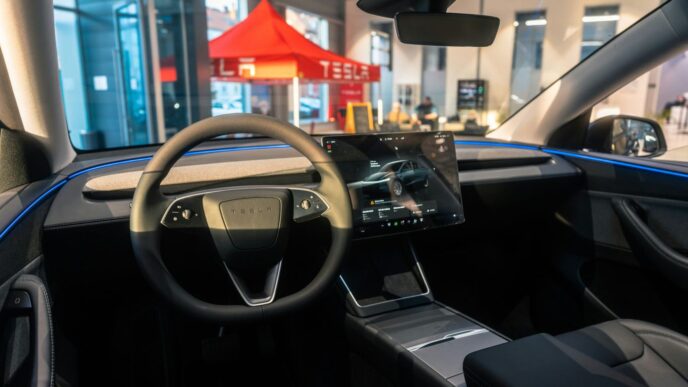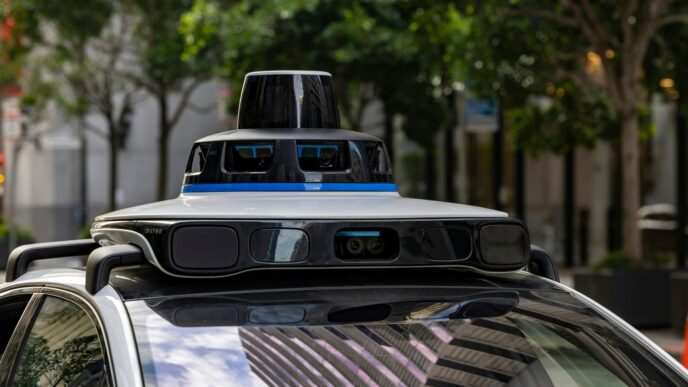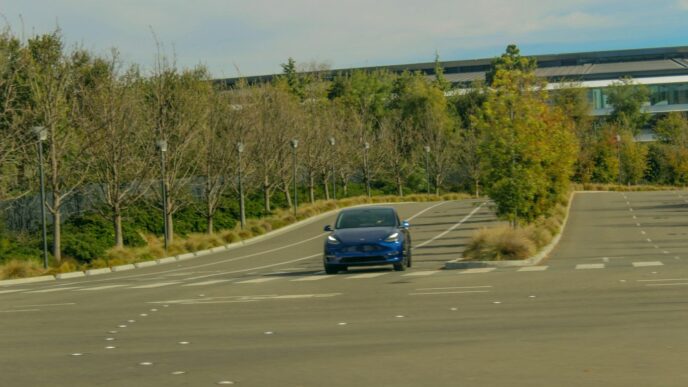The BMW i3 was a pretty wild idea when it first came out. Back in 2013, BMW, known for its fast, gas-guzzling cars, decided to jump into the electric car world with this little, quirky-looking thing. It was definitely a risk, but it turns out it was a pretty smart one. The i3 wasn’t just a one-off experiment; it was the start of something big for BMW’s electric future. We’re going to take a look back at what made the i3 special, how it drove, and what its legacy means for the electric cars BMW is making today.
Key Takeaways
- The BMW i3 was a groundbreaking electric vehicle for BMW, signaling a major shift towards electrification.
- Its unique ‘one-box’ design and use of materials like carbon fiber and aluminum set it apart from other cars.
- Driving the BMW i3 offered a distinct experience, praised for its agility and fun factor, though it divided opinions.
- The i3’s development traced back to earlier BMW electric concepts, evolving into a production reality with innovative construction.
- Lessons learned from the i3 directly influenced BMW’s current electric lineup, including the iX, i4, and iX3, showing its lasting impact.
The BMW i3: A Bold Leap Into Electric Mobility
Back in 2013, when most car companies were still figuring out what to do with electric cars, BMW dropped the i3. It wasn’t just another car; it was a statement. This little electric hatchback was a complete departure from what people expected from BMW, a brand known for its powerful gasoline engines and sporty sedans. The i3 was BMW’s first serious move into the electric future, and it was a gamble. It showed they were willing to take risks and try something totally new.
A Trailblazer For BMW’s Electric Future
The i3 really set the stage for everything that came after it in BMW’s electric lineup. Think of it as the car that paved the way for the iX, i4, and iX3. It proved that BMW could build a compelling electric vehicle that was also fun to drive. The lessons learned from building and selling the i3 directly influenced the development of these later models, helping BMW expand its electric offerings.
Innovative Design And Construction
What made the i3 stand out was its unique construction. Instead of a traditional metal body, it used a lot of carbon fiber and aluminum. This made it super light, which is great for electric cars because it helps with range and handling. It was a really smart way to build a car, especially for something new like an EV.
A Departure From Tradition
This car was different, plain and simple. It didn’t look like anything else on the road, and it certainly didn’t feel like a typical BMW. The focus was on efficiency and sustainability, which was a big change for a company that built its reputation on performance. It was a bold move that showed BMW was serious about electric mobility, even if it meant stepping away from what made them famous.
Design Philosophy And Construction Innovations
When BMW decided to jump into the electric car game, they didn’t just want to make another EV. They wanted to make a statement. The i3 is a prime example of this, really showing off a different way of thinking about car building. It’s not just about the electric motor; it’s about the whole package.
The ‘One Box’ Design Approach
Instead of the typical car shape with a separate engine bay, passenger cabin, and trunk, the i3 went for a ‘one box’ design. Think of it like a tall, compact wagon. This layout helps maximize the interior space, which is pretty neat for a smaller car. It gives it a unique look, almost like a futuristic pod on wheels. The wheels are pushed out to the corners, which also helps with stability and gives it a distinctive stance. It’s a clever way to use the available space, especially when you don’t have a big engine taking up room.
Carbon Fiber And Aluminum Frame
This is where things get really interesting. BMW built the i3 with a special construction method, using an aluminum chassis and a carbon fiber reinforced plastic (CFRP) body. This isn’t your average car build. Carbon fiber is super strong but also incredibly light. This made the i3 lighter than many of its competitors, which is a big deal for electric cars because batteries are heavy. This lightweight construction also allowed BMW to get rid of the traditional B-pillar (the post between the front and rear doors) and use rear-hinged doors, making it easier to get in and out. It’s a high-tech approach that really sets it apart.
Sustainable Interior Materials
BMW really leaned into sustainability with the i3’s interior. They didn’t just use recycled stuff as an afterthought; it was a core part of the design. You’ll find materials like:
- Recycled plastics from PET bottles
- Leather treated with natural substances like olive leaf extract
- Wood from sustainably managed eucalyptus plantations
They even built a massive factory in Washington state powered by hydroelectricity just to produce the carbon fiber. It shows they were serious about reducing the car’s environmental footprint from start to finish, not just when it’s being driven.
Driving Experience And Owner Perspectives

It’s funny how opinions on the BMW i3 can be so split. Some people absolutely adore it, while others just can’t stand it. It seems like there’s no middle ground, right? But after spending some time with it, and hearing from folks who live with it daily, it’s clear there’s more to this little electric car than just a simple like or dislike.
The Polarizing Nature Of The BMW i3
This car definitely makes you take a stance. It’s not your typical BMW, and that’s part of what makes it so divisive. Some drivers find its unique approach refreshing, a real departure from the norm. Others, however, miss the traditional BMW feel and find the styling or driving dynamics a bit too out there. It’s a car that BMW really took a chance on, building something completely new from the ground up, and that boldness is reflected in how people react to it.
Daily Driving The BMW i3
Living with the i3 day-to-day is an interesting experience. For starters, it’s incredibly quiet. You barely hear a thing, no engine rumble, no vibrations – just a smooth, serene ride. This silence is especially noticeable in city driving. The one-pedal driving feature, where lifting your foot off the accelerator slows the car down significantly thanks to regenerative braking, is a game-changer. It takes a little getting used to, but once you do, driving other cars feels clunky by comparison. It makes stop-and-go traffic a breeze. Maintenance is also surprisingly infrequent, with some owners reporting very long intervals between services. The steering and throttle response feel like you’d expect from BMW, offering good feedback. However, there’s a quirk: hitting a bump while braking can momentarily disengage the regenerative braking, leading to a sudden, unexpected decrease in slowing power. It’s something you learn to anticipate, but it can catch you off guard initially.
Lightweight Agility And Fun
Despite its somewhat unconventional looks, the i3 is genuinely fun to drive. Its lightweight construction, thanks to that carbon fiber and aluminum frame, makes it feel nimble and agile. It zips around corners with a confidence that belies its compact size. The instant torque from the electric motor means acceleration is brisk and responsive, making city driving and merging onto highways feel effortless. It’s a car that encourages you to enjoy the drive, offering a playful character that many owners have come to appreciate. It proves that electric cars don’t have to be boring; in fact, the i3 injects a dose of pure driving enjoyment into the electric mobility equation.
The BMW i3’s Genesis And Evolution

It’s easy to look at the BMW i3 and think it just sort of appeared out of nowhere, a sudden, radical departure for a company known for its roaring engines and sleek sedans. But the truth is, BMW had been tinkering with electric ideas for a long, long time before the i3 hit the streets. They weren’t just jumping on a bandwagon; they were building on decades of experimentation.
Early Electrification Concepts
Believe it or not, BMW’s electric journey started way back in the 1970s. They even built a special electric 1602, which was used to pace runners at the 1972 Munich Olympics. Imagine that – an electric car leading the pack, way before it was cool! Over the years, they kept experimenting, stuffing different battery types into various 3 Series models. It was a slow burn, a lot of trial and error, but it showed they were thinking about a different kind of future.
The Mega City Vehicle Concept
The real precursor to the i3, though, was the "Mega City Vehicle" concept, first shown in 2011. This was the blueprint. It was designed from the ground up as a city car, focusing on being lightweight and efficient. BMW even showed a prototype version at the 2012 London Olympics, hinting at what was to come. The concept was remarkably close to the production i3, a testament to BMW’s clear vision. They managed to keep much of the radical design and construction ideas intact, which was pretty rare for car concepts.
From Concept To Production Reality
When the i3 finally rolled out in 2013, it looked like nothing else on the road. It wasn’t just a regular car with an electric motor swapped in; it was a whole new approach. BMW used innovative materials like carbon fiber for the passenger cell and aluminum for the chassis, making it super light. The interior also featured sustainable materials, further pushing the envelope. It was a bold move, a clear signal that BMW was serious about electric mobility and wasn’t afraid to take risks to get there.
BMW i3’s Lasting Impact On The Automotive Landscape
The BMW i3 might not be on the assembly line anymore, but its influence is pretty massive. Think of it as the car that showed BMW, and honestly, a lot of the auto world, that electric could be cool and different. It wasn’t just another EV; it was a statement. This car really pushed the boundaries of what a mainstream automaker would dare to do with electric mobility.
Lessons Learned For Future EVs
BMW took some big swings with the i3, and those risks paid off in terms of knowledge. They figured out a lot about building lightweight cars with unique materials, like carbon fiber, and integrating electric powertrains in a way that felt distinctly BMW. The interior, with its sustainable materials, was also a big deal, showing that eco-friendly didn’t have to mean boring. These weren’t just random experiments; they were foundational steps.
- Material Science: Discovering how to effectively use carbon fiber reinforced plastic (CFRP) for the passenger cell and aluminum for the chassis. This approach significantly reduced weight, which is a huge win for EV range and handling.
- Powertrain Integration: Developing a compact and efficient electric drive system that could be adapted for various future models.
- User Experience: Understanding how drivers interact with EVs, from charging habits to the unique driving feel, and how to make it appealing.
Paving The Way For The iX, i4, and iX3
You can see the i3’s DNA in pretty much every electric BMW that’s come out since. The iX3, i4, and the more recent iX all benefit from the groundwork the i3 laid. They’ve taken the lessons learned about battery tech, motor efficiency, and that distinctive electric driving feel and scaled them up. It’s like the i3 was the beta test for BMW’s entire electric future. The success of the i3 gave BMW the confidence to really go all-in on electric vehicles, aiming for a future where EVs make up a huge chunk of their sales. It’s a pretty impressive evolution of electric cars.
BMW’s Commitment To Electrification
Before the i3, BMW was known for its powerful gasoline engines. The i3 was a radical departure, showing they were serious about electric. It wasn’t just a compliance car; it was a purpose-built EV with a unique design and construction. This bold move signaled to the world that BMW was committed to a future beyond the internal combustion engine. It set the stage for their ambitious goals, like having electric vehicles make up half of their global sales by 2030. The i3 proved that an established automaker could innovate and lead in the EV space.
Considering The BMW i3 Today
So, you’re thinking about the BMW i3 in 2025? It’s a bit of a unique case, isn’t it? This car really split opinions right from the start. Some people absolutely loved its quirky style and electric-only nature, while others just couldn’t get on board. It wasn’t your typical BMW, that’s for sure. But now, with a few years under its belt, how does it hold up? Is it still a smart buy, or has time passed it by?
Potential Drawbacks and Criticisms
Let’s be real, the i3 wasn’t perfect. For starters, the range anxiety was a big one for many. While it was fine for city driving, longer trips could be a challenge. The charging speed, compared to newer EVs, also feels a bit dated. The small battery size and the often-criticized upright driving position were also points of contention for potential buyers. Some folks also found the interior materials, while sustainable, a bit too plasticky for a premium brand. And then there’s the styling – love it or hate it, it was definitely a departure from the norm and not everyone’s cup of tea.
The Value Proposition Of Used BMW i3 Models
This is where things get interesting. Because the i3 was a bit of a niche vehicle, and because newer, longer-range EVs have come out, you can find used i3 models at some pretty attractive prices. If you’re looking for a second car, a city commuter, or just want to dip your toes into electric driving without breaking the bank, a used i3 could be a solid option. You get that BMW build quality and a surprisingly fun driving experience, especially considering its lightweight construction. Plus, with the ongoing advancements in EV tech, you might find models with updated software or battery packs. It’s worth looking into the upcoming 2025 BMW i3 electric sedan to see how far the technology has come, but don’t discount the original.
Is The BMW i3 Still A Viable Option?
Absolutely, but with caveats. If your daily commute is relatively short and you have easy access to charging, the i3 can still be a fantastic and economical car to own. Its small footprint makes it easy to park, and its unique design still turns heads. It’s a car that prioritizes efficiency and agility over outright speed or massive cargo space. Think of it as a smart, eco-conscious city car with a premium badge. For the right buyer, someone who appreciates its innovative spirit and doesn’t need to cover hundreds of miles between charges, the BMW i3 remains a compelling choice. It paved the way for so much that came after, and that’s got to count for something.
The i3’s Lasting Impression
So, what’s the final word on the BMW i3? It’s clear this car wasn’t just another model; it was a real experiment for BMW. They took a chance, trying new materials and a different approach to electric cars. While some folks loved its unique style and eco-friendly build, others found it a bit too out there. Even though it’s no longer being made, the i3 definitely paved the way for the electric BMWs we see today. It showed the company, and us, that electric driving could be interesting and that taking risks can pay off, even if not every gamble lands perfectly. The i3 might be in the rearview mirror, but its influence on BMW’s electric future is undeniable.
Frequently Asked Questions
Was the BMW i3 a good electric car?
Yes, the BMW i3 was a groundbreaking electric car for its time. It showed that BMW could make a stylish, fun-to-drive electric vehicle with unique features. While it might not have the longest range compared to today’s EVs, it was a pioneer and taught BMW a lot about making electric cars.
What made the BMW i3’s design special?
The i3 had a very unique ‘one box’ design, meaning the passenger and cargo areas were all in one main space. It also used a lot of lightweight materials like carbon fiber for the body and aluminum for the frame. The inside used eco-friendly materials like recycled plastics and wood.
Is the BMW i3 still a good car to buy today?
For some people, yes! Used i3 models can be a more affordable way to get into an electric car. They are known for being fun to drive because they are so light. However, you should check the battery’s condition and be aware that its electric range is less than newer electric cars.
What does ‘Mega City Vehicle’ mean for the i3?
The ‘Mega City Vehicle’ was the concept name for the i3. It meant the car was designed specifically for driving in cities – it’s small, easy to park, and electric, making it perfect for urban environments.
Did the BMW i3 influence other BMW electric cars?
Absolutely! The i3 was like a test lab for BMW’s electric future. The technology and lessons learned from the i3 helped BMW create newer electric models like the iX, i4, and iX3, making them better and more advanced.
Why did some people not like the BMW i3?
Opinions were mixed! Some people found its styling a bit strange or ‘too different.’ Others worried about the cost of repairs on a high-tech car like a BMW, or found the electric range limiting for longer trips. But many loved its unique design and how fun it was to drive.

